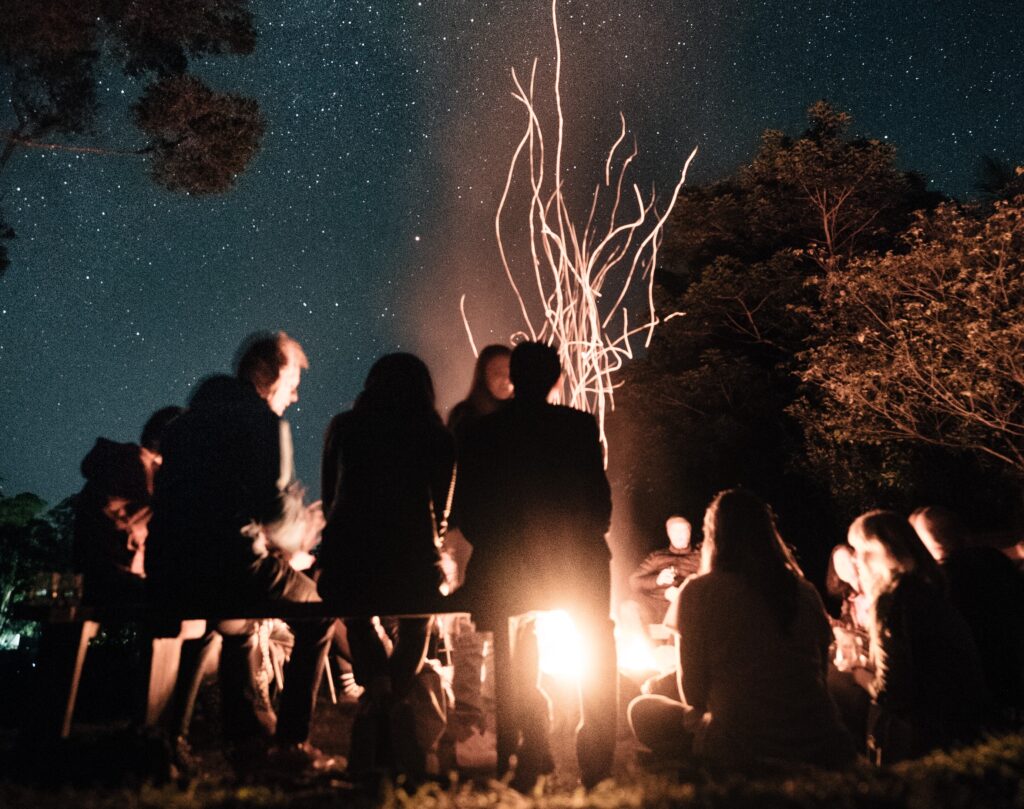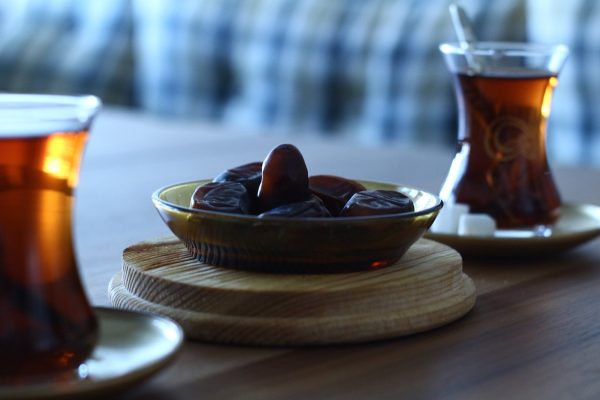Introduction
The traditional tashlikh ritual (performed any time on the first or second day of Rosh Hashanah or through Yom Kippur) is an opportunity to reflect on the past year and let go of what is no longer serving us. We take bread crumbs (or more environmentally friendly alternatives, such as pebbles), which symbolize where we have missed the mark, and throw them into a body of water, allowing for a fresh start in the new year. Water is a potent symbol of cleansing, purity, and rebirth. Yet like newborn babies, emerging from that water ritual leaves us in a place of profound vulnerability. We have begun the work of teshuvah (repetance or return), examined our lives, noted where we’d like to change, and then we let go, tossing all that effort into the water. We’ve done all we can do. Now what?
We prepare to enter the drama of the High Holidays, where we are reminded over and over that nothing is really in our control, and no matter how much work we do to account for our actions in this world, our fate is ultimately out of our hands. This notion is most powerfully expressed in the Unetaneh Tokef prayer, which tells us that this day, the Day of Judgment, is “awesome and terrible,” because God will decide “who will live and who will die” in the coming year. Whether or not we believe in a supernatural deity, that terrifying fact is unavoidable. There is so much out of our control.
And yet, we are faced with making consequential choices daily. Our lives may be insignificant in the scheme of things, but our actions matter. How can we bring this sense of empowerment to our High Holiday rituals? I propose that we add an element to the traditional tashlikh ceremony, symbolizing our power: fire. This ritual can be done either on its own or following a water-based tashlikh ritual. If you follow the practice of not lighting a fire on Rosh Hashanah, this can be done on any other weekday before Yom Kippur.
Materials
- Two pieces of flint (and a lighter/matches for back up)
- Wood to make a bonfire
- Notebook
- Pen or pencil
- Sweet-smelling herbs or spices
Ritual
- Bring your materials to an outdoor area where you can safely build a small bonfire (this can also be done near a body of water to combine this fire ritual with a water-based tashlikh ritual).
- Set up the wood for the bonfire, but do not light it yet.
- You may be seated or standing for this ritual. Place the two flints (and backup lighter/matches) within reaching distance.
- Use the guided reflection below to peform the ritual.
Guided Reflection
This can be read to oneself or by a ritual leader to an assembled group.
This ritual is inspired by a teaching in Bereishit Rabbah 11:2, which connects the story of Creation to the ritual of lighting the havdalah candle. This text also examines the existential feeling of vulnerability that all human beings feel at various points in their lives, and that is most potent during the High Holidays.
When the sun sank at the termination of the Sabbath, darkness began to set in. Adam was terrified, [thinking,] Surely indeed the darkness shall envelop me (Ps 139:11): shall he of whom it was written, He shall bruise your head [i.e., the serpent] (Gen. 3:15), now come to attack me! 11. What did the Lord do for him? He made him find two flints which he struck against each other; light came forth and he uttered a blessing over it; hence it is written, But the night was light about me. 12. What blessing did he make? Who creates the lights of fire [the blessing recited over lighting the havdalah candle at the end of Shabbat].
In this midrash, Adam is terrified of the dark, like a child. Even before he is able to utter a prayer for help, God gives him the tools he needs to create his own light. We will now put ourselves in that mindset in order to discover our own sources of light.
Take a few deep breaths and close your eyes, settling into your seat or your standing position. Imagine yourself as the first human being on earth. This place is totally unknown to you, filled with mystery and magic. You are just beginning to find your footing, getting to know all the elements, plants, and strange creatures who share this earth with you. You still have no words for this awesome place, and you look around amazed. You lift your head to the sky and see the sun, that bright hot ball, which you’ve just started getting used to, begin to set. The colors of the sky start to shift from yellow to orange to pink, purple, and blue. Suddenly, it is totally dark. You’re alone. You have no one to reach out to. Your worst fears begin to float through your mind. Take a moment to tap into what you are most fearful of at this moment. Allow yourself to be fully in this darkness and feel that terror and vulnerability for a few more moments. Now imagine that a force greater than yourself is guiding your hand to reach for the two flints nearby. This force is not speaking to you, but gently nudging and lifting your hands. Do this slowly, feeling the air on your skin and the sense of support and guidance in the movement of your hands. Lift the two flints and strike them together to make a spark. You can try a few times, and if it doesn’t work, use the lighter or matches and strike a flame. Light the wood in the bonfire. Sit for a few moments in silence, feeling the warmth. Let it bring comfort to your fears. Continue to connect with the feeling of support, guidance, and safety.
Recite the blessing: Berukhah at Yah, eloteinu ruakh ha-olam, boreit me’orei ha-eish
Blessed are you, our Divine Source, breath of the universe, you creates the lights of fire.
Now reflect on this past year. You may have already done some reflection on what you want to let go of into the water of tashlikh. Now reflect on your inner fire: consider the times this year that you tapped into your deepest source of power. When were you bold? When did you know exactly what to do? When did you overcome a difficulty? When did you surprise yourself by discovering new sources of strength within? When did you speak out when it was uncomfortable? When did you control an impulse mindfully? When did you face your fears?
Write a few examples in your notebook and then rip these off into strips of paper. Look at each example, taking a moment to remember that moment of power and to acknowledge that the power is in your hands. Slowly throw each strip into the fire. Watch the paper crinkle, blacken, and fall apart, reminding us that our deeds are temporary, but a great fire and light burns on. Watch the memory of your actions rise as smoke into the air.
Now hold your herbs or spices and inhale their scent, allowing the sweetness to fill your lungs and inspire you stay strong as we move into the next phase of the High Holidays. You may even want to save these herbs or spices in a satchel to bring with you to High Holiday services or beyond, to remind you of your power, especially in moments of fragility.
Recite the blessing: Berukhah at Yah, eloteinu ruakh ha-olam, boreit minei besamim
Blessed are you, our Divine Source, breath of the universe, you creates varied spices.
Thank you to Rabbi Tali Adler, who shared the teaching from Bereishit Rabbah as part of the Hadar Jewish Wisdom Fellowship, August 2022.











One Response
Wow this ritual is going to be great. I just moved to New Mexico, and there are no bodies of water. (when the Rio Grande dries up). But I can already see how I will be able to tweak this ritual for use with a small fountain.